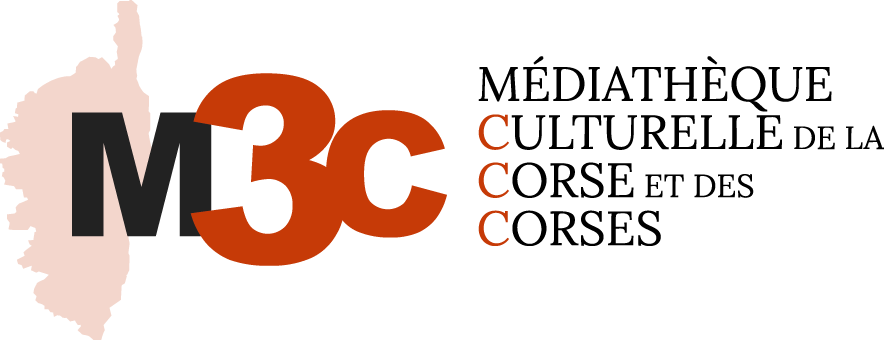The Media Library of Corsica and Corsican Culture, first open science platform on Corsica
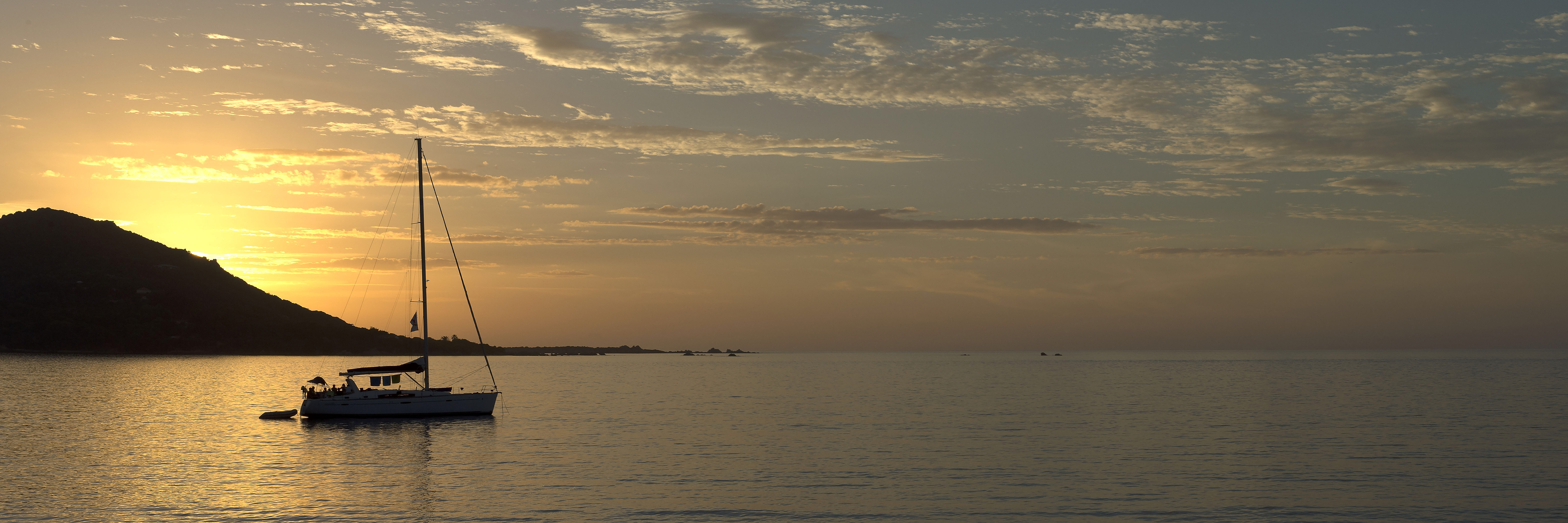
Memory between science and society
On January 1st, 2008, the opening in Corte of the "Locations, Identities, Spaces, Activities" laboratory (UMR 6240 LISA) dedicated to the research in Human and Social Sciences, requires among its main lines of action that a strategy based on the new technologies of the digital applied to the Corsican domain is set up, at the same time as the question of building a center of traditional documentary archives dedicated to the Corsican and more globally to the languages and to the literatures known as minorities is raised. Both would come to replace a scientific function, a training by research and a policy of restitution of knowledge to the Corsican civil society, able to support the development of the territory by the production and the democratization of knowledge.
Closely linked to the emergence of the first and only Humanities and Social Sciences laboratory in Corsica, the "Locations, Identities, Spaces, Activities" laboratory (UMR 6240 LISA), the Media Library of Corsica and Corsican Culture, designated by the acronym M3C, bears witness to such orientations from the very beginning. Inscribed in the current needs of research, it testifies to the progressive transformation of the Humanities by the numerical one in the same time that it testifies to a social anchoring of the research by answering a very lively historical claim since several decades.
The M3C is also the transversal axis to which the scientific production of the team "Identities, Cultures: the processes of patrimonialization" is leaning, whose very strong multidisciplinarity gathers in particular literature, education and the history of education, linguistics, history, medieval history, anthropology, archaeology, sociology, musicology, information and communication, all of which are linked to a Corsican, insular and Mediterranean issue. It constitutes the common base, ensuring for a great part the implementation of its event program and collecting in fine for archiving, valorisation and mediation, its publications and more generally the results of its research.
It was therefore an arduous task to determine which of the digital tools would be the most appropriate for "computerizing" the production of knowledge about Corsica. It was especially necessary to consider by its uses and thanks to its practices, how the M3C would manage to rebuild and to spread a scientific and social culture at the crossroads of the digital world, of the university production and of a wider public, while being aware that such a culture would evolve and that it would be quickly called into question by the effect of this mediation.
The M3C's digital platform is a unique cultural space, with choices that distinguish it. First, because it is entirely dedicated to Corsica, then because of the multidisciplinary nature of the documents it contains, and finally because of the four-year program that gives it substance, the Boost Cultural Competence in Corsica (B3C). Nowhere consultable in its current state, and not competing with any existing scientific corpus, the M3C brings together for the first time in a single knowledge niche, several types of content from original media of a very diverse nature: manuscripts, ancient or modern printed materials, folio pamphlets, periodicals, microfilms, sound content, photographs, videos, maps, multimedia. It proposes to offer in open archive in their digitised form historical documents such as La Istoria di Corsica by Filippini (1594), Sicilia antica, Sardinia e Corsica by Philipp Cluver (1619), Reymüthige Briefe die von der Krone Frankreich gemachte Eroberung der Insel Corsica by Frederic de Neuhoff (1770), a part of the Bulletin historique de la Corse, the handwritten correspondence of Pasquale de Paoli (1755 to 1793) or the first handwritten courses in Latin of the University of Corsica dated 1765 (law of civil institutions, elementary geometry and natural law) written by Auguste Nobili Savelli and Giuseppe Ottaviano. The M3C also provides access to a series of scientific events, colloquia, workshops, seminars, and study days that have been organized there since 2008.
The use of a platform of data dedicated to unify the Corsican fund, can certainly seem paradoxical at first sight for the reason that today we consider rather this tool, the digital platform, as an economic catalyst based on a model of exchange and production rather commercial than cultural. Nevertheless, it is possible to use the digital expedient as a strong ethical and scientific model, without plunging it into the dominant system of a principle based on profit, but by counterbalancing it on the contrary by the progressive opening of an "open" way advocating for a freedom of access to science.
The will to structure the information has been put at the service of the particular nature of the Corsican collection. Thus, the scientific productions of the UMR 6240 LISA, the patrimonial collections resulting from our policy of collection of funds and the space of scientific mediation are divided into three great lines: on the one hand, the thematic courses being used to diffuse to the general public by scenarizing the raw numerical data, on the other hand the virtual exhibitions proposing immersive contents in 3D.
Let's clarify a few points about heritage collections. As a choice of digital showcase today quite widespread, they answer a tangible reality of the Corsican fund, namely that its fragments often remain indissociable from the donors, the legatees or the collectors who gave them body. Thus we find for example in Corte, in the library of the Università di Corsica Pasquale Paoli the Emmanuelli fund and the remains of the François Flori fund, named after one of the benefactors of these fragments of collection currently consultable. In the municipal archives of Bastia, the fund of the patrimonial archives bears the name of one of its patrons, Tommaso Prelà, doctor of Pope Pius VII, among other donors such as Dr. Antoine Mattei, Canon Letteron, Gian Carlo Gregorj. The list of examples is long. Each fund, each fragment of documentary corpus on Corsica can only with great difficulty be removed from the patronymic or the place in favor of which it exists. No doubt we could see here a form of characterization and appropriation particularly lively for "identity" objects which remain forever linked to Corsica, doubled by an irredeemable taste for the archive which does not escape to any passionate of these rich libraries.
The M3C's digital collections are primarily derived from collected holdings. They are associated with freely searchable and downloadable content of the resource whenever the negotiation of economic rights has made this possible with publishers and authors, or when it is in the public domain.
We can highlight here some of his most emblematic documentaries:
- The scientific productions of the the "Locations, Identities, Spaces, Activities" laboratory (UMR 6240 LISA) testify to the rapidly perceived interest in organizing our data for online publication after negotiation of the rights, in order to promote the process of open archive at the same time as the free expansion of the uses and practices of the Corsican language and culture.
- The preliminary inventory of Corsica's heritage on the basis of relevant territories (micro-regions of Corsica), conducted in partnership with the Ministry of Culture (Mérimée database), is the final stage of unveiling to the general public, more than 6730 inventory sheets and 54991 photographs spread over 134 municipalities of the island. It follows the phases of training of a promotion of students to the techniques of the heritage, to the documentary research in archives, and to the collection of the data on the ground.
- The Corsican literary review Bonanova (41 issues published between 1998 and 2020) and the iconographic collection associated with it, are an exemplary case of contribution to the diffusion of the productions in Corsican language whose limited and quickly exhausted print run, justifies the use of the digital which perpetuates textual sources too quickly unavailable in spite of the real policy of development of the Corsican language supported by the cultural militancy of the local publishers since the 80s.
- The digital collection of Corsican literature, composed of founding texts or of reference, unavoidable pillars of the Riacquistu as it is the case for E Sette chjappelle written by Gjacumu Fusina, builds a perimeter of safeguard for works often left without recent republication in the landscape of the scientific edition. The digital practice continues to evolve the path of these scientific publications in a very positive way, evading the question of costs generated in the midst of the publishing crisis, and in fact by distancing itself from the traditional editorial system, to continue to stimulate as much as possible, their sharing and their circulation. Such a decision aiming at "opening" the archives of the Corsican literature without subjecting them to embargo of more than a few months, nor to the laws of the old culture of the print, will be measured only by the effect produced. And it can only be beneficial if the digital implants more deeply its trace in the memories, favors the personal assimilation of the reader and relaunches the cultural fallouts. It seems that we are more on this line of favourable hypothesis to the Corsican productions and to its readership, without even that the chosen approach does not come to make shade to the interests of the editor as well as to those of the authors. In the strict respect of the rights negotiated with the publishing world, of the delayed access of 12 or 18 months or even more of the literary productions, and of the bet launched for the free access, the model of convention of putting on line on the platform of the M3C establishes a stable and perennial link towards these resources, not subjected to the digital volatility that we know.
- Another emblematic collection, the Chiatra collection, is an uncommon photographic testimony on the island. It presents the digitised version of two hundred silver bromide photographic plates that immortalize major scenes of agropastoral life between the end of the nineteenth century - the very first pictures date from 1891 - and the first half of the twentieth century. This unpublished collection attests to the photographer's taste for moments of public or intimate village life that made the heart of Corsican villages beat in the last century. These particularly striking snapshots were collected with an unwavering will: it is easy to guess the unquenchable passion of the very first photographers. At that time, the process was still rare, expensive and therefore not very accessible to the general public. What can we say when, in addition to this rarity, there is also the unedited and singular testimony of a living society, with popular and agro-pastoral roots?
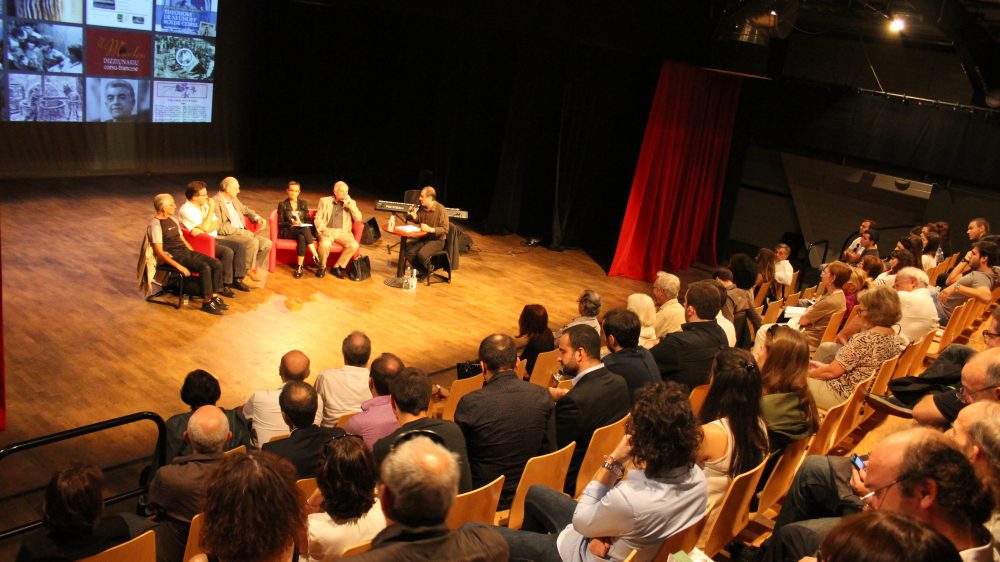
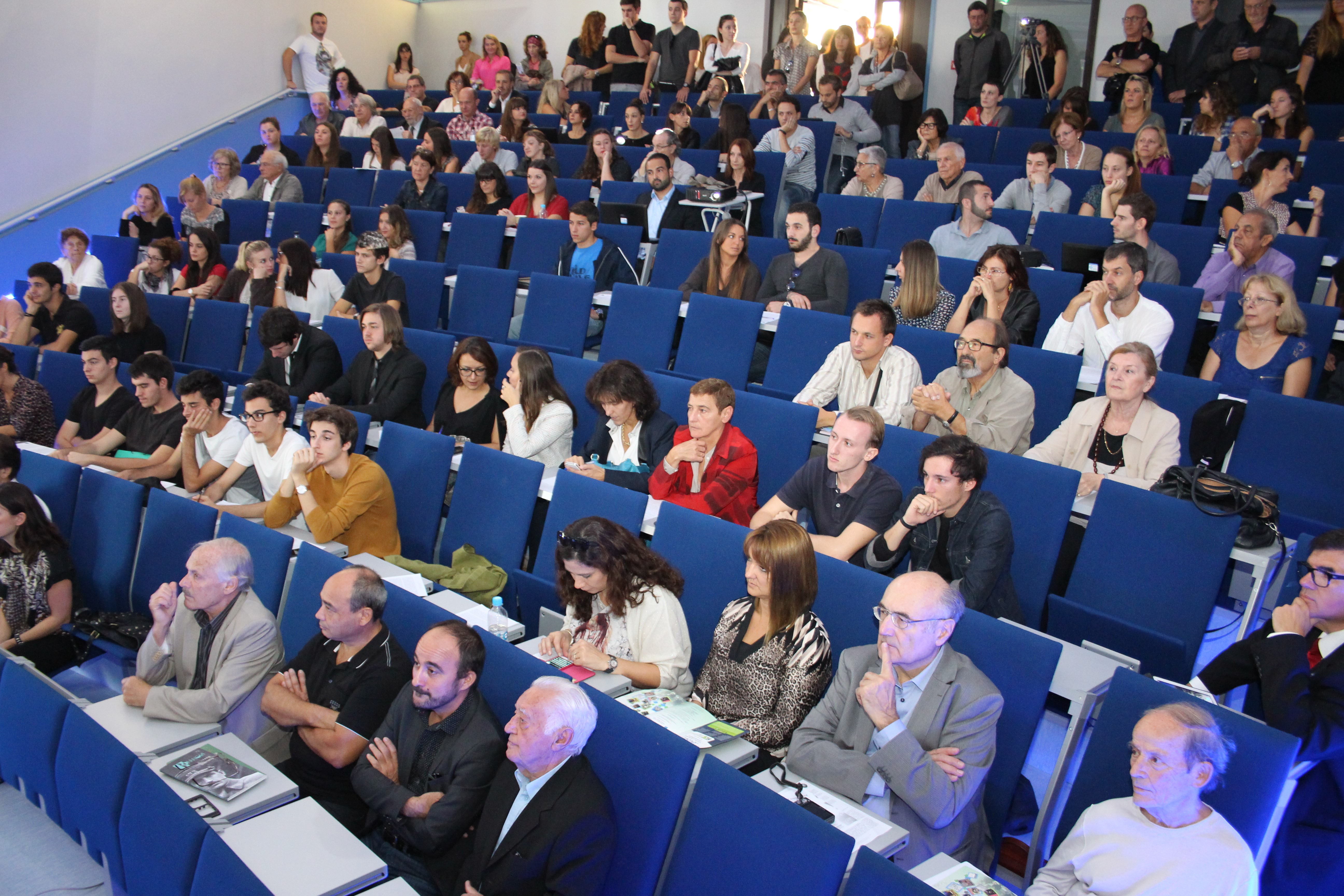

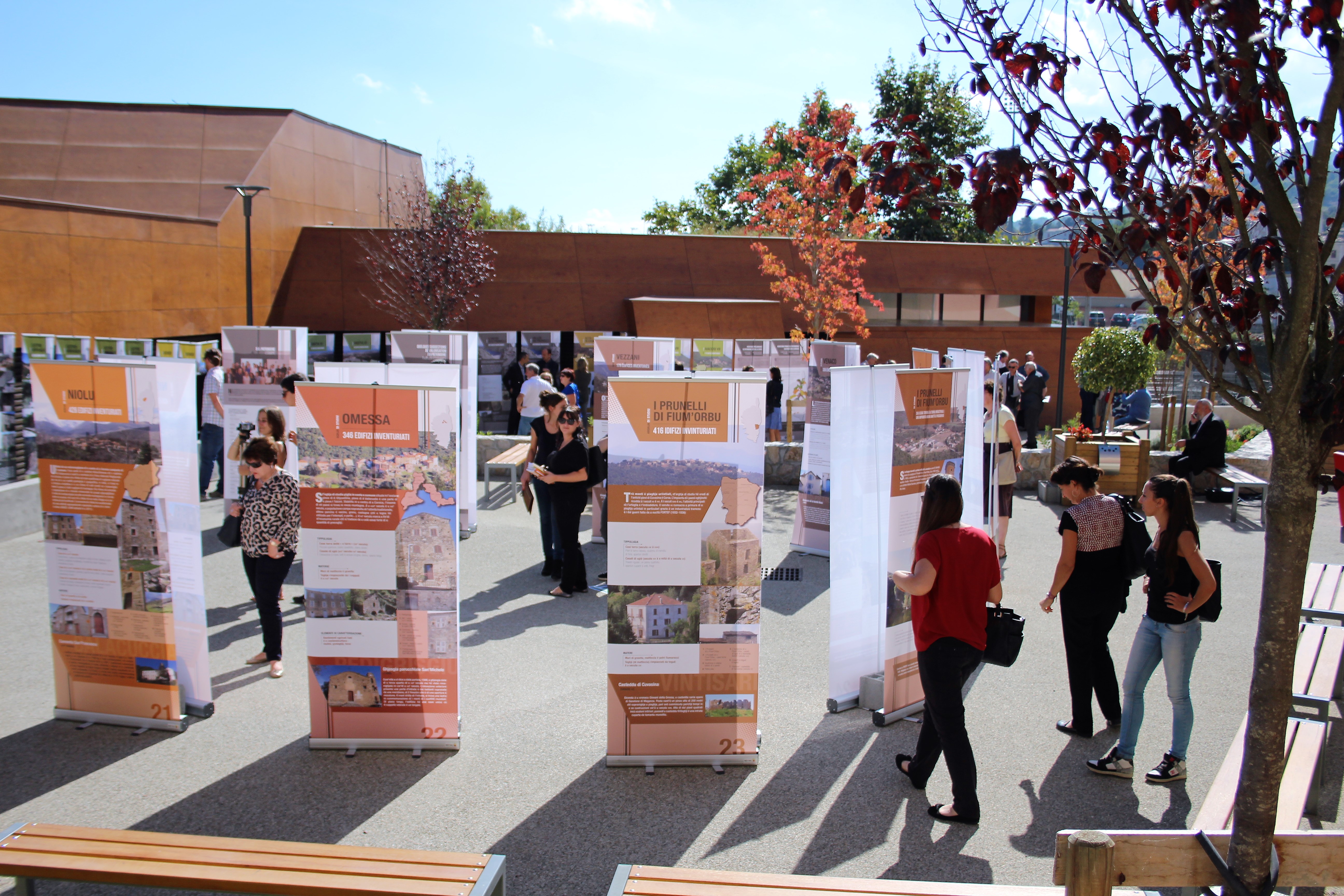
The pitfall of passing from a logic of acquisition to an accumulation facilitated by the Web, was for the Corsican fund much less thorny. The data are neither strategic, nor of great size. If it remains true that such a threat hangs over the vast sets of contents coveted by the holders of a profitable economic model, it reaches in a lesser measure the digital culture of the scarcity, hindered by the access to the understanding of the language. Thus it seems that we can benefit, under certain assumptions, from a more virtuous model to be developed under the auspices of Open Science. As much visible and accessible thanks to the tool of digital platform, generating a space of dialogue, benefiting from the paradoxical advantages of a restricted readership, it is to be bet that this building site fits in a vision of general interest.
A few words about the thematic tours, the first part of the scientific mediation program: they are a scenarization of our collections that allow us to make them accessible to the greatest number. Virtual itineraries thus ensure a stage of scientific mediation by building an environment that is no longer conducive to research but to a visitor profile that may be as far removed as possible from the circles of knowledge production. By adapting flexibly to the audience they reach, the thematic tours constitute an alternative discourse base that responds to the pronounced taste of the general public of the island and the diaspora for knowledge of Corsican society and history. In this form of collaborative exchange, the digital allows the effectiveness of a more democratic model of knowledge, giving each one the intimate feeling of contributing in a narrow way to a Corsican culture in the process of unveiling itself under his eyes. We join here one of the foundations of the free sharing with the empowerment of the individual which is one of the promises of the digital, its capacity also to federate around a common knowledge, to build an identity of group around these knowledge, according to a principle particularly carrying in the social ecosystem where we are with the Corsican subject.
As a second part dedicated to scientific mediation, the M3C proposes immersive contents in the form of virtual exhibitions, as an extension of the scientific publications of the UMR 6240 LISA. It offers a permanent and free access to the digital documents that follow the original exhibitions. Whenever you want and without any travel constraints, all the time you need is left to this convivial and personal discovery of the research world.
The mediation continues with the production of educational tools made from the M3C's data deposit: DVDs for learning Corsican with In corsu (self-learning method), In corsu+ (heritage discovery game in four island versions, Corsica, Sardinia, Balearic Islands, Sicily), I Sgiò di a Rocca (scripting the history of the lords of the Rocca with access to historical data), the dictionary U Muntese, exhibitions and archaeological and heritage guides ; a sound library for children telling tales and legends of Corsica and the Mediterranean; a literary review in Corsican language Bonanova, etc.
The widening of the network of consultation of the Corsican fund by the birth of the digital platform of the M3C was consequently imposed like a new departure, a new breath to inculcate to an often confidential culture, so that it becomes open culture.
The paradox of such an initiative is that it uses the immateriality of the digital (wrongly called "virtual") to unify, disseminate and make concrete a knowledge as never before. Subjected to the pitfalls of crumbling, confidentiality, fetishism of the collector, precarious conservation, cultural disdain, oblivion, the Corsican fund starts again from such an initiative to take the indispensable turn of the digital. The digital serves as a cornerstone to the revival of the studies on Corsica.
The question of the obsolescence of the techniques implemented to build any digital platform that must be regularly recast in order to ensure its durability, occupies a relative place for an archive on Corsica. The imperfect replication on new supports refers more globally, as we know, to the problem of the copy of sources. This last one remains as for it, much more crucial in the process of patrimonialization on Corsica that it concerns sensitive archives destined to disappear. This is the reason why the M3C has chosen to equip itself with a library of works that can also leave at our disposal and as often as possible, the intact quality of the original that no digital copy will ever be able to replace.
The M3C program is therefore established as an approach to safeguarding a disappearing cultural heritage, through a continuous process of safeguarding and dissemination to the digital world.
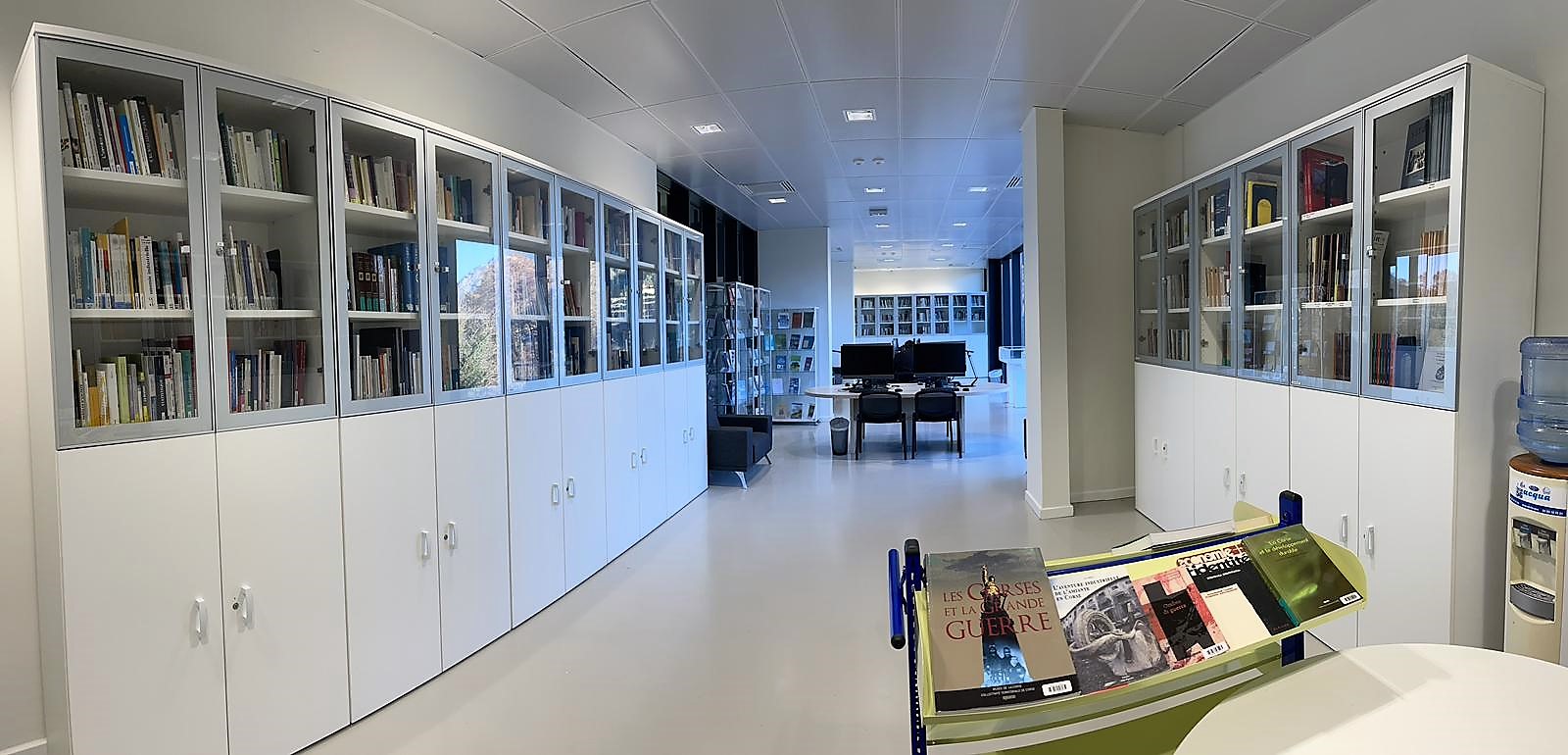
Our Corsican research library
Because of the symbolic and attractive nature of the archives on Corsica, and also because books remain the historical medium for the transmission of knowledge, the second component of the M3C was to build a multidisciplinary library open to the general public. At a time when many heritage institutions, until now rather conservative in their uses, are changing the traditional mission of archiving by setting up a permanent policy of valorization of their funds through temporary exhibitions, thematic tours, virtual museums, immersive readings, it seemed neither stale nor superfluous to lay the foundations of a Corsican documentary fund in the laboratory. The threat of the obsolescence of the book, intimately linked to the question of the power of diffusion of the information and unjustly put at the index in the current speeches of the partisans of the all digital as a brake to the effectiveness and the communicational progress, seemed to be a false problem. The archiving of sources and the preservation of the book object, on the contrary, as a future condition of innovation for the evolution of the digital model or of any other form of technical vehicle of which we do not know yet what it will be, seemed to be a much more relevant viaticum.
The library thus constructed is articulated around two principal missions: archiving and valorization. Archiving responds to the growing technicalization of the archival professions, and promotion to their democratization. The importance of collecting its own collection, which would give a unique scientific and cultural identity to the M3C's Corsican research library, was immediately apparent. This would serve on the one hand as a lever of reputation, and on the other hand would contribute to building a local ecosystem where the book and the digital form a cordial agreement.
The choice was made to acquire recent publications on Corsica, all disciplines included, mostly since the turn of the 90s, which marks the real rise of the editorial policy of support to the Corsican language and culture, and to also gather a collection of history books with heritage value, exhibited progressively in rotation with the general public exhibitions of the laboratory.
These heritage works, free of rights, have their digital counterpart on the M3C within the collection of "rare or ancient manuscripts and works", which solves their partial museification, and which also compensates for the choice of not allowing them to be browsed. To deliver archive objects that are too fragile to be made available to everyone would never have ensured their long-term material survival.
Now let's talk about the heritage stamp: when the opportunity arose to recover heritage pieces on Corsica, during the Leclere auction in April 2016, the Università di Corsica Pasquale Paoli strategically supported our approach. The acquisition of Curzio Tulliano's Disinganno intorno alla guerra di Corsica and a letter from Pasquale Paoli written in Corte on June 9, 1794, addressed to "these gentlemen of the committee of safety in Rogliano" attests, if need be, to the real pitfall facing the constitution of a heritage archive fund mentioned above.
It also suggests the path to be followed in order to acquire objects recognized on the art market, manuscripts and autographs as being of symbolic and especially financial added value. The sale of fragments of apocryphal correspondence allegedly written in Pascal Paoli's hand at an auction in New York is also proof of this, and it is impossible to say whether this is an all too human deviance or an obvious success.
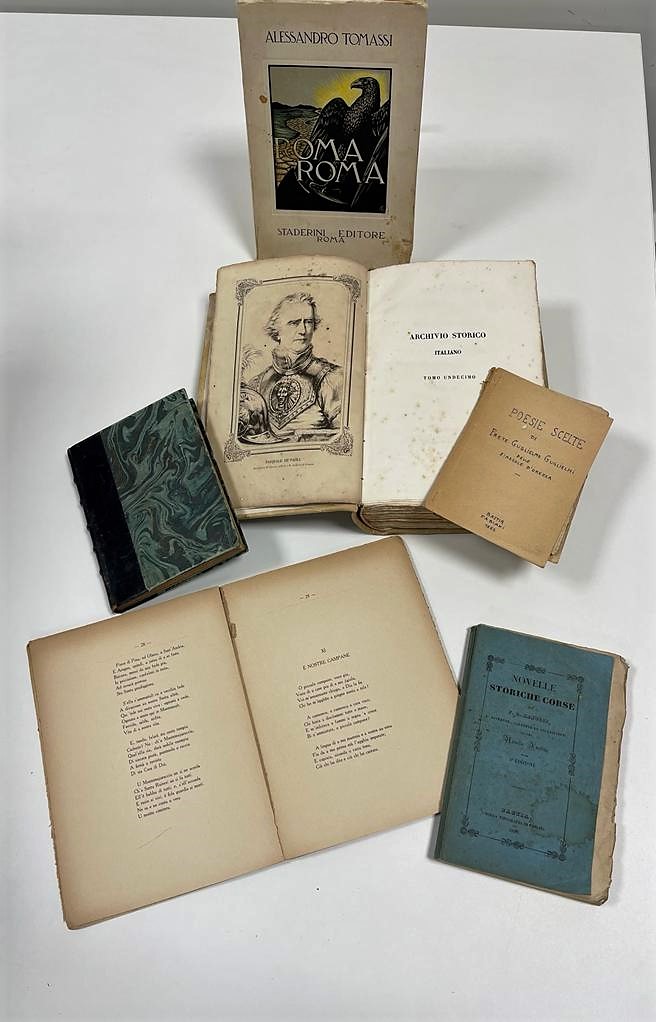
The context of infatuation for the revalorization of documentary funds, fights against the original evil of the archive. It claims in fact to create and to revitalize something that has often been archived because it is archived, too fixed and static to renew an interest in the present. The archive, a dusty relic from a completed, bygone and sometimes situated era, subjected to the erosion of History, is fundamentally recluse on a distant past. How to subject it then to the performative, bubbling, innovating present of the digital while time comes to freeze it little by little? Is it then doomed to serve only as tangible proof of historical authenticity? Does it carry an old stamp, which allows to know its only and ultimate value? So many questions that digital technology and its uses bring back to the forefront.
Archiving is rather a human concern, torn by a paradox: to make available hic et nunc the greatest number of sources that we want to perpetuate at the same time. In other words, it implies a continuous immediacy, according to a reiterated and unceasingly renewed action. It is thus that it would be necessary to distinguish the archiving from the storage or the conservation, whose meanings do not refer to a continuous starting of the process. While the latter have as their main mission to hold something in a safe place, to keep it out of time, archiving implies immediate access to documents, leaving open the possible field of their permanent use.
This is the reason why the document consultation room, from the status of a place of passage that would serve as a showcase for the Corsican collection, has been integrated into the logic of dissemination of heritage content and research work: solicited for its contents by the services of communication or valorization of the University of Corsica in order to carry the valorizing stamp, it is a place of reference which potentially relays the objects of specific knowledge intended for the academics (research aspect), the students, high school pupils, college students even to the small sections (educational aspect) and the civil society (social aspect). These three community circles focused on our collection, endowed with three different reading dynamics on the archive object, would thus each find a use for it by multiplying the scales of understanding and value, from an internal interest within the laboratory to a public recognition of the social utility of the research.
Thus, a possible solution for the Corsican fund was to establish a more personal dialogue between the archive and the contemporary march of the insular society, to make perceptible its wide power of evocation with the present. How? Through a tangible link with the "hermeneutic" who discovers it and the community of which he is a part. It is impossible for a digital platform to carry out such an approach if it does not have at its side the materiality of the book object to which a material label of authenticity is affixed, thought out in a space of adequate access and adapted to interactions with a public of users.
It is advisable in other words, to put under the eyes by the means of a course of reading: to promote the fund of local and regional archives on Corsica by scenarizing it, to renew regularly by varying the thematic corpus from the disciplines of the axes of research of the laboratory UMR 6240 LISA, to sense the needs beyond the provision on site of a catalog with system of requests; in a word, to recognize to the Corsican fund an institutional, concrete, transverse and multi-field utility.
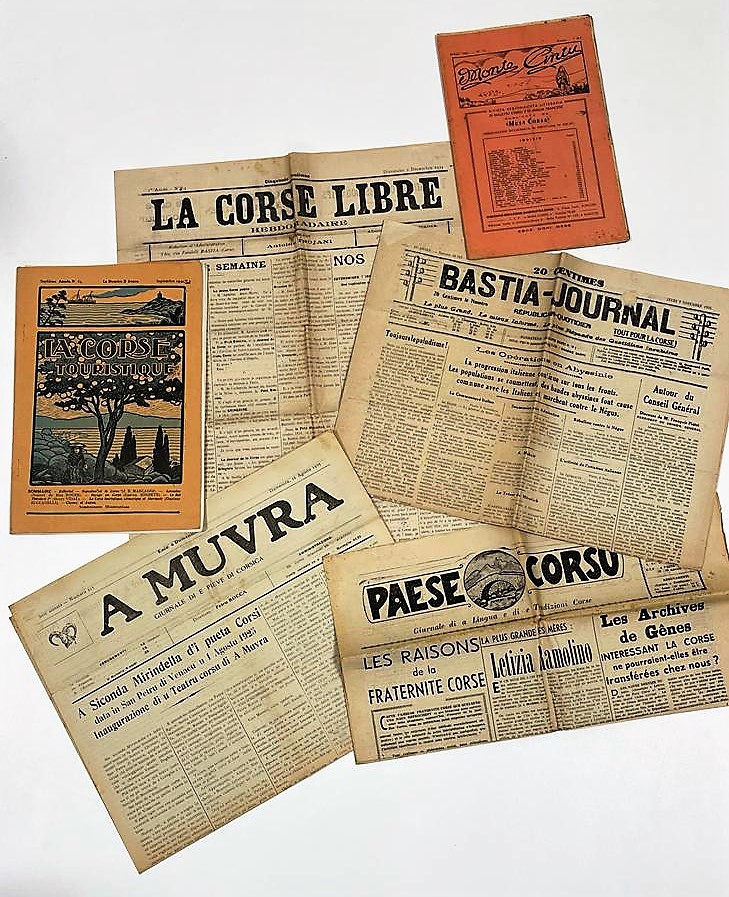
In 2022, the collection of the M3C's Corsican Research Library will represent the equivalent of about 3000 works subject to access by internal regulations, making it a public place open to all on a daily basis, thanks in particular to the active involvement of the doctoral students of the UMR 6240 LISA. The policy of purchasing publications is pursued annually through a global marketing, allowing the systematic acquisition of the latest publications in all disciplines, on Corsica. This is now entirely visible on the shelves and indexed by means of a quotation. The 250 linear meters available with the storage room are sufficient to foresee several years of construction of this fund. The ten consultation stations allowing access to the M3C catalog are added for quick searches. For obvious reasons of patrimonial rights, it is of course currently possible to consult intra muros, on request, about 5000 more documentary entries than on the digital platform.
Judging by the figures, we are however very far from being able to claim exhaustiveness, but as far as Corsican collections are concerned, is this really plausible? When one notices that no catalog of public institutions, including BNF and national archives, holds the copies of manuscripts or books that are found on the shelves of passionate Corsican collectors, the challenge seems to become a challenge. And when by chance, we find some delivered to the auctions at Drouot, Loeb-Larocque or Auction.fr, it is to find a buyer in Germany or in Latin America... In short, it does not seem possible today to confront without a strong institutional support, the continuous crumbling of sources on Corsica and its swarming seems to be considered as a postulate of principle.
For the elaboration of the documentary research part, the choice of the integrated library management system (SIGB) is Koha even if the number of records was relatively limited. It is indeed the most interoperable application available today in open access, and whose source code is being developed by the community. Each user can consult the catalog of bibliographic records online, whose metadata description provides information for use. They then import them into Zotero, for example, according to the most common practice among users. To answer the application profile of the Corsican collection, it would be however desirable with time that they evolve so as to integrate in particular the notion of multilingualism and micro-locality, by making derive the general data of the existing record of another library in order to enrich them. Otherwise, the use of Corsican in queries remains a minority, and therefore unequal. The debate is open and turned towards the future, knowing that the indexation of the notices does not integrate at the moment this necessity.
In counterpoint to the implementation of the Corsican fund, a set of more general legal questions emerges, linked to the current evolution of the uses of knowledge. The thread serves to unwind the skein... Taken in the middle of a strategy of negotiated diplomacy, let us say, with the copyright, the reform in progress of the intellectual property located at the crossroads of technical, commercial, patrimonial, editorial and cultural stakes is still too often situated in the wake of a repressive logic for all that touches the digital field. And for good reason: the stakes are colossal and the rules outdated. Nevertheless, it would be a pity if the publishing world were to follow the path of a "golden" model, like the world of music and film. As everyone can see, these last few years have literally made us rethink the use of these traditional places of access to knowledge, the libraries, because of the irruption (of the revolution!) of digital technology. The M3C program, by focusing for the first time on the creation of an open platform associated with a multidisciplinary collection on Corsica, dialogues like many other projects, at the forefront of research. Would it have been logical that it was spared? Not of course.
What local solutions have been identified? Annually, the application files for support of the publication of scientific works are put online with embargo on the model of the green archive. These works are also available in paper format in the document consultation room after their commercial publication. One or two years later, depending on the agreement, they are transferred to the online platform. This temporization allows the paper and digital heritage to live and coexist.
It would seem appropriate to maintain the course towards an open access policy in view of the future annual documentary collection campaigns of the M3C and, for want of anything better, to perpetuate the "green" archive model for cultural or scientific publications with negotiation of rights. The embargo for a few months allows to draw the necessary editorial benefits prior to free consultation or even free downloading.
As for the collections of works of Corsican literature, their diffusion has been negotiated without harming their conditions of commercial exploitation. They appear in the collections "Works of Corsican literature", "publications of the University Cultural Center (CCU)", "Bonanova literary review". All in all, there are about a hundred works in 2022 for which the rights are acquired until 2029, thus favoring the online distribution of editions that have become rare or out of print. In order not to harm the double paralyzing effect of a restricted readership and the constraining rules of the intellectual property, the adaptation of the Corsican fund to the digital environment leads to a window of consented freedom which favors in the medium term the cultural pollination and the reuse of sources. We can see it through some figures:
In addition to the scientific and cultural publications that are added each year to the works of a patrimonial nature, in 2021 the document consultation room will receive the Joseph-Antoine Canasi collection, an important donation of more than 40,000 original documents on Corsican history and literature, which has been formalized by agreement. As explained above, this is one of the strong examples of a founding act, which identifies a heritage site.

The Canasi collection had presented from the outset, in its very first inventory, an opportune patrimonial interest for a scientific program such as ours: first of all, it offered a more than satisfactory state of conservation for documents of limited edition on Corsica, sometimes 100 years old or more. Then, its location not far from Corte, allowed an easy storage and treatment with human means which remained reduced. Finally, the declared will of the rightful owners of the Canasi collection, represented by the municipality of Nuceta, left no doubt about the possibility of contributing these archives to university research. From a chronological point of view, the Canasi collection spans about a century and a quarter, from 1825 to 1940. During his lifetime, his creator tried to collect absolutely everything that was published about Corsica at the time, from magazines to books, from postcards to tourist posters, from newspapers to classified ads.
It is worth noting that a hundred or so social "objects" from the daily life of the village in the last century have come down to us. Fishing and hunting equipment, personal creations, woven nets used to trap shrews and voles, musical instruments, painters' equipment, pottery, basketry, agricultural tools, a whole disparate but indissociable set linked to the profuse daily life of this jack-of-all-trades who was the inventor of the Joseph-Antoine Canasi collection, demonstrates the undoubted creative ability of their former owner. This modest heritage, apparently small, in the sense that it is the testimony of the "small page of History" of a Corsican who took refuge there as much as possible when the great conflagrations of the past century allowed it, leads us to reflect on the future that this kind of atypical objects would have in a documentary consultation room: the legitimacy of their presence next to the book object, and the usefulness that they could have for example in an appropriate collection. The possible presence of patrimonial objects having arrived by long-term loan, within the room of documentary consultation of a Mixed Research Unit of the CNRS, is not framed to my knowledge by the official texts. It refers to a concrete form of non-institutionalized knowledge that should be valued without their existence being really controlled for the moment. However, it cannot be denied: many archives and libraries hold them in their own collections. On the condition of ensuring an optimal method of conservation, a storage protected from humidity, powdered air and sunlight, it seemed appropriate to us to put them on the fringe of the documentary collection, but to preserve them. For the documents, on the other hand, it was essential not to make the mistake of chipping away at the Canasi collection and thus falling back into one of the most pernicious failings of the Corsican collection in general. The objects are allied to the archives: firstly to preserve a multi-support variety able to testify of the richness of transmission of the Corsican cultural heritage. Finally because the last technologies of reproduction by impression of objects in three dimensions, in partnership with a Fablab, could bring an added value within the framework of educational activities assigned to the insular heritage. Within the framework of an operation of valorisation for the general public, it thus did not appear prejudicial to make speak the object of archive under all its possible tenants.
Another example, facilitated by the digital tools offered today - one thinks particularly of the democratization of 3D immersion headsets - it seems welcome to create a virtual exhibition featuring all types of objects (books, magazines, posters, maps, postcards, photos and these heritage "objects").
By virtual exhibition we mean the presentation, thanks to a virtual reality headset and our website, of audiovisual and textual contents presented according to a defined scenario: a permanent and free access to the digital documents that follow the original exhibitions. When everyone wishes it and without constraint of displacement, all the leisure time is left to this convivial and personal discovery of the world of the research, in the middle of a space of cultural and scientific mediation. The objective is to offer a possibility of virtual consultation in digital form of texts, images, places of life of a villager and objects which scandalized the daily life. In this discovery, the viewer of the virtual exhibition equipped with a VR headset, has the choice to evolve through a dynamic course of scenes in panoramic format at 360 ° (village square of Nuceta, church and its surroundings, fountain). The principle is that from a smarpthone or the browser interface, the public can access a selection of heritage supports that are presented in their context, that is to say, in the three typical and constituent spaces of the village of Nuceta. The textual, visual and audiovisual contents are presented in the form of a leaflet, or virtual totems, placed on an interactive map of the village, which compares the places where Joseph-Antoine Canasi, for example, produced watercolors in 1918, his easel, the brushes, knives, palettes, and paintbrushes he used, with the real and current image of that place in 2020. The sound recordings of texts in Corsican language, from the original poetic productions, also participate in the immersive multi-support reconstruction. The whole is consultable from a course in the course of which the spectator interacts in order to evolve from a media to another.
It is finally possible to conceive the Corsican documentary fund of our consultation room, as a place of life of the archive, where the human valorization and the circulation through the digital medium are organized. This place is built with resources of equal interest: the digital one that fights in this very moment to acquire a scientific guarantee, the book object scientifically more correct and the patrimonial object in promising way of recognition. The document consultation room facilitates the reception and circulation of scholars and the general public. It offers to all a place of consultation of the knowledge, endowed with a patrimonial aura bequeathed by ancient documents and with a multiannual policy of acquisition and purchases in break with the confidential system of the Corsican personal, plurilocalized and fragmentary libraries.
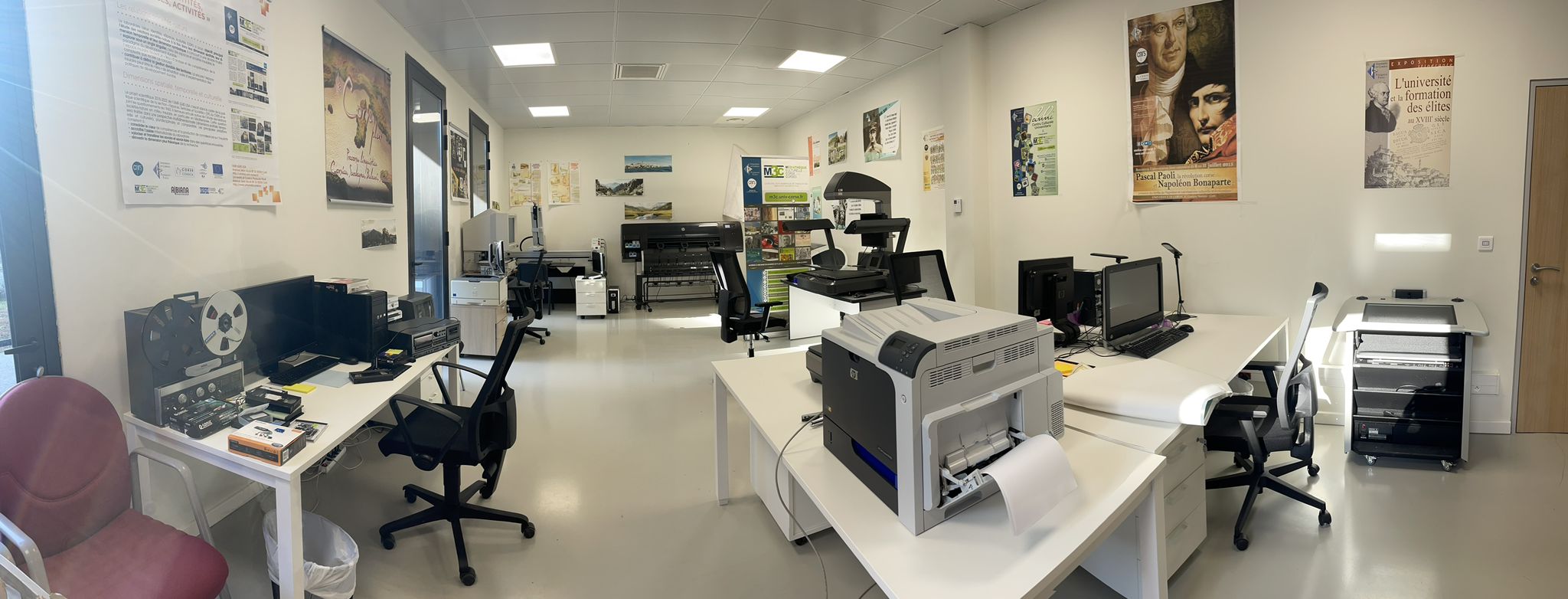
Our digitisation room
The policy of digitisation of the patrimonial funds on Corsica, imposed itself as of the opening of the "Locations, Identities, Spaces, Activities" laboratory (UMR 6240 LISA) like one of the great lines to come in Humanities and Social Sciences at the University of Corsica Pasquale Paoli, with however some reticences and internal incomprehensions to which the current evolution of the digital Humanities does not give reason. Apart from the 1634 square meters of the new Simeoni building where our CNRS research laboratory is located, we did not yet have at our disposal the equipped room of 100 square meters, especially dedicated to the documentary digitisation. A pre-project inventory mission was launched, in order to know the existing needs and to establish a digitisation plan for the implementation of the future M3C digital platform.
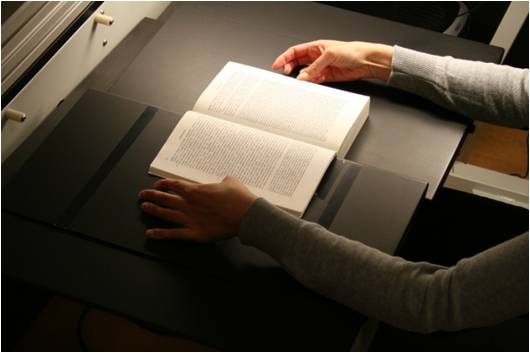
The initiative taken in 2007, was then to be underlined: the digital technology had not yet imposed itself as a constant necessity in the research landscape. After a survey conducted locally with the university community, it was still perceived as a communication process from which we benefit at most, practical advances. A one-off tool, placed there as a back-up: too technical to be intuitive, not ergonomic enough to be democratized, we were far from the current unavoidable generalization within the professions that make up the university community.
The remains of the Centre d'Études Corses, which acquired a remarkable archive of several hundred titles at the beginning of the 1980s, established, among other things, a guideline for this preliminary mission, which consisted in making an exact inventory of the Corsican collection formerly stored at the Palazzu Naziunale. This made it possible to draw up a not very encouraging report in view of its continuation. Then cut up, left in fragments, the collections indicated vast absences. It is however in such a variety of formats and supports (books, booklets, articles, magazines and periodicals, loose-leaf, old catalogs, posters, sound recording, audiovisual, diverse iconography, natively numerical archives) that had to emerge the unity of the Corsican fund at the same time by the means of the constitution of a documentary fund (more precisely a media library since were present, texts, sounds, images, videos) and of a numerical fund. It was necessary to face the obsolescence of the tools of reading and exploitation of the sources by successive decades (years 70, 80, 90, 2000) and to find consequently a technical bridge which can reconcile the existing with the formats required for the archiving and the passage to the digital tool.
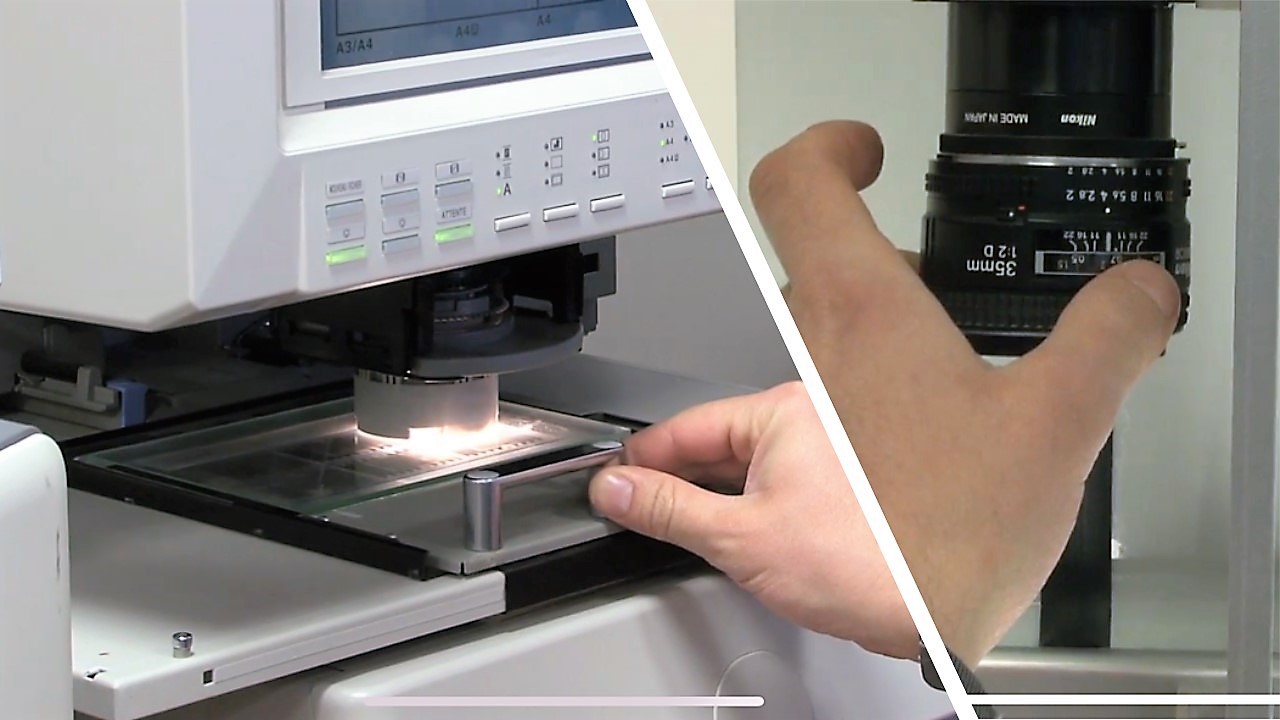
More than a systematic passage to a standardized technology of future, The digitisation was going to serve as opportune link to the Corsican fund. Far from being thought only in order to facilitate the conditions of access to the data, the accessibility or the diffusion of the information, the digital allowed to rebuild in order to better transmit it, a cultural and patrimonial heritage, to gather and to unify the scattered in a stable place. The technique was the key to a convergence. It is thus that such a progress appeared as the best possible expedient to a scientific requirement: where to find funds on Corsica and the Corsicans? Where to pour them? How to gather them?
These broad outlines retrace rather laconically the months of prospecting that led to the birth of the M3C program. The operating mode had to reconcile the specificity of each support among the free or proprietary formats, the digitisation technique, the storage means, the archiving solutions. The formats, which are very varied and the sources diffuse, should not deprive the data of being interoperable once digitised, and should be open to international standards in the event that our digital warehouse is one day harvested by a larger data platform, such as Isidore.
The data processing chain follows a precise work protocol. For the text format, it ranges from the use of documentary capture tools: flatbed scanners of the Digibook B&W and Copybook RGB models, which the UMR 6240 LISA acquired following a market launch. For microfiche or microfilmed tapes, the Canon MS800 completes the reading of documents loved by medievalists. The native image is generally obtained in TIFF format with a spatial resolution of 300 dpi. The depth can go from black and white to 24 bits, depending on the size of the image and its nature. The treatment of the native image, is carried out most of the time, using a software treatment on which one carries out systematically and for each document a qualitative enrichment in several stages. Three filters are most often applied: the framing, the linear correction, the rectification of the image. A final module allows us to control the quality of the final rendering: its cleaning, its optical character recognition (OCR) and its transformation into a PDF type medium. The final rendering is placed on a server that is backed up daily by a networked tape drive. Of course, the global description here could not take into account the case by case: if the original document is of sufficient quality, if it is a manuscript, an old book, a bound document, a recent thermo-bound work, if the volume of pages to be treated on a work is not too important, if the ocherization is effective according to the quality of the characters... all these pitfalls scandalize a part of the daily life of the digitisation room, the other one being dedicated to the sound and audio-visual digitisation on the majority of the types of tapes and recordings image and sound formerly used.

Our immersive room
This two-sided L-shaped 3D CAVE room is equipped with two Christie Mirage WU14K-M projectors associated with an angled lens that allows a direct projection of a very high technical level. With a capacity of 50 square meters and 50 seats, this innovative equipment allows the research teams of the UMR 6240 LISA to use virtual reality and 3D. The Techviz software takes care of the tracking and the management of the contents in order to make it exploitable. The room offers the potential of total immersion in different anthropized or natural environments thanks to an exceptional audiovisual and sound quality.
As far as the M3C program is concerned, the use of our immersive room is currently dedicated to Micro-Folies. However, this does not constitute exclusive use.
The Micro-Folies program is a cultural policy initiative supported by the Ministry of Culture and coordinated by the public establishment of the Parc et Grande Halle de la Villette in conjunction with 12 institutions: Center Pompidou, Château de Versailles, Cité de la Musique - Philharmonie de Paris, Festival d'Avignon, Institut du Monde Arabe, Louvre, Musée National Picasso-Paris, Musée d'Orsay, Musée du Quai Branly-Jacques Chirac, Opéra National de Paris, Réunion des Musées Nationaux - Grand Palais, and Universcience. A Micro-Folie offers fun and technological cultural content that can be installed in any existing location (media library, village hall, heritage site, town hall, business, school, shopping center, etc.) and does not require any particular infrastructure. Each Micro-Folie is articulated around its Digital Museum. Bringing together several thousand works of art from numerous institutions and museums, this digital art gallery is an original cultural offer that encourages curiosity. Fine arts, architecture, scientific cultures, live performances, it is an open door on the diversity of the treasures of humanity. The Digital Museum is particularly well suited to artistic and cultural education programs. The project leader can integrate additional modules according to his needs, the existing structures and the links with local initiatives. We have studied this subject with the referents of the Villette in order to know if it was possible to set up the future Micro-Folies within the immersive room of the UMR 6240 LISA, from the technical equipment which already exists in this room. Based on this principle, out of all the modules that make up the Micro-Folies, we chose those that correspond to our precise needs and that can be inserted into the existing structure of the UMR 6240 LISA. It is in particular the "virtual reality" module and the "digital museum" module that caught our attention. The Micro-Folie can indeed offer a virtual reality space that proposes a selection of 360° immersive contents: documentaries, shows, seminars, films, and any other form of cultural and educational restitution for the public. The "workshop space" module, to a lesser extent, would also be appropriate for the implementation of our project within the UMR 6240 LISA, as it would allow us to master the use and creation of 3D objects, particularly in the archaeological discipline. A partnership with the Fablab of the Università di Corsica Pasquale Paoli will complete our offer. It should be noted that the proposed use of the immersive room of the UMR 6240 LISA does not correspond to an exclusive occupation of the premises: not only does the Digital Museum adapt to the place that hosts it, but it can be easily assembled and disassembled, allowing other activities to be organized in the same space. Concerning the supervision of the Micro-Folies project in the immersive room of the UMR 6240 LISA, two mediators trained on the internal resources of the University or the CNRS, are planned to welcome the public and to guide them in the handling of the Digital Museum and its programming. All the material of the immersive room can consequently, with a phase of parameter setting, be used for the digital museum of Micro-Folies.
The highly symbolic place also lends itself to pretext. The Università di Corsica Pasquale Paoli, located in the heart of the city of Corti, former capital of the island in the geographical center, is part of the context of a rural territory to be (re)energized for a better social cohesion. In order to meet this demand and the political will at the territorial level of a generalization of practices and knowledge in the cultural and patrimonial field, considered as a value of the territory, one of the objectives of the research laboratory in Human and Social Sciences, the UMR 6240 LISA, is to propose scientific tools for social use based on a knowledge of the Corsican field having for objective the acquisition of cultural competences by and for the territory. The Micro-Folies device is perfectly in line with a cultural policy of deployment of innovative technologies linked to the digital culture. On this occasion, it will take place in the brand new virtual immersion room that has recently been equipped by the UMR 6240 LISA, which is located on the first floor of the Edmond Simeoni building on the Grimaldi campus.
The Micro-Folies, once established in the immersive room of the UMR 6240 LISA, will constitute in addition to this aspect of essential sensitization and democratization of the new technologies of the digital, a project of diffusion of proximity for the university public, for the school public of the primary and the secondary, very close to the campus, for the public of the town of Corti also, and more generally a factor of social cohesion between the world of the research and the general public.
The deployment of the Micro-Folies also responds to an insistent social demand, since it is linked to the program B3C (Boost Cultural Competence in Corsica). The latter was built with the scientific involvement of a team of 20 teacher-researchers supported by the project "Identities, Cultures: the processes of patrimonialization". Its objective is to accompany the social and cultural transformations of Corsican society by transferring scientific skills to the institutional, private and associative actors of the cultural industry, including tourism. It is a question of organizing the patrimonial chain in order to activate a cycle of conception, production and diffusion of goods and services using the creativity and the intellectual capital of Corti, university city in the service of a social innovation; this in continuity of the previous PO-FEDER to which we had emarged and thanks to which the Media Library of Corsica and Corsican Culture (M3C) was financed Digital platform having for function to make the Corsican fund accessible and understandable, the M3C constitutes a deposit of data to exploit within the framework notably of the B3C project. For all these reasons, the implementation of a Micro-Folie within the virtual immersion room of our CNRS laboratory was justified. The only research building in Human and Social Sciences in Corsica, part of the total surface of 1634 square meters of the UMR 6240 LISA is thus equipped with research tools, scientific mediation and innovative equipment through the M3C program: digitisation room, document consultation room, exhibition hall and immersive room which currently benefit our community of sixty-seven teacher-researchers, fifteen engineers and technicians and seventy-seven doctoral students.
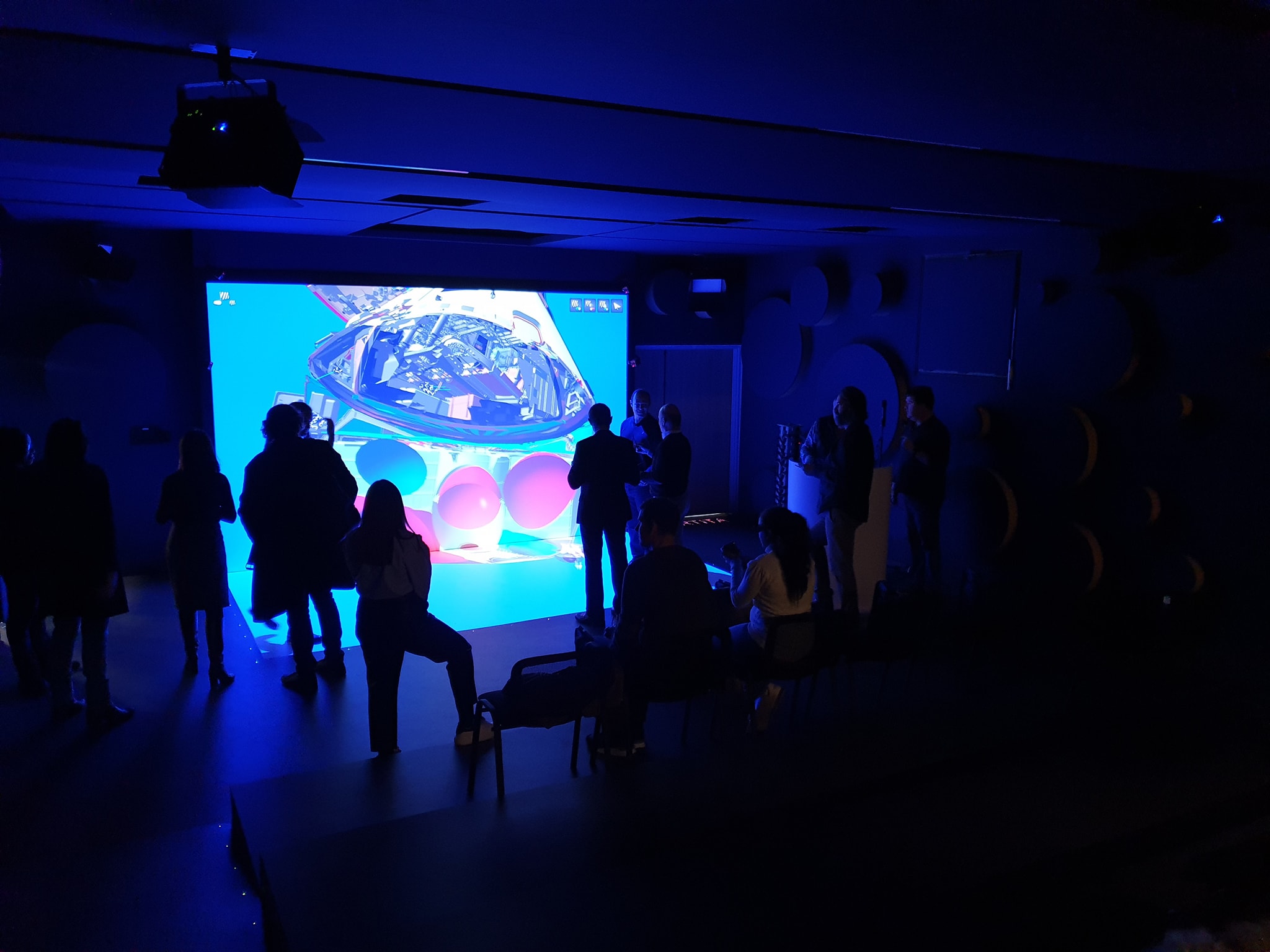
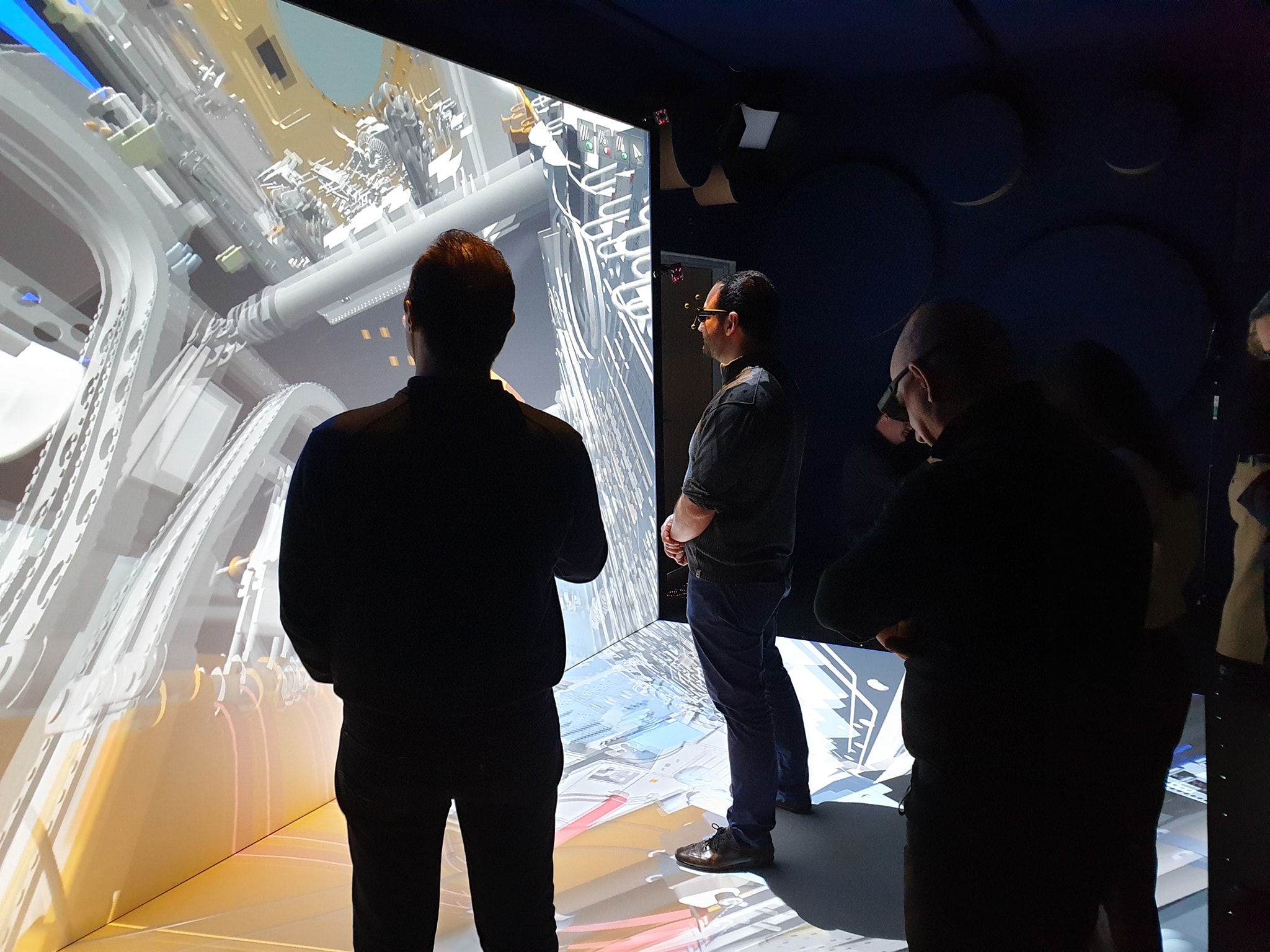
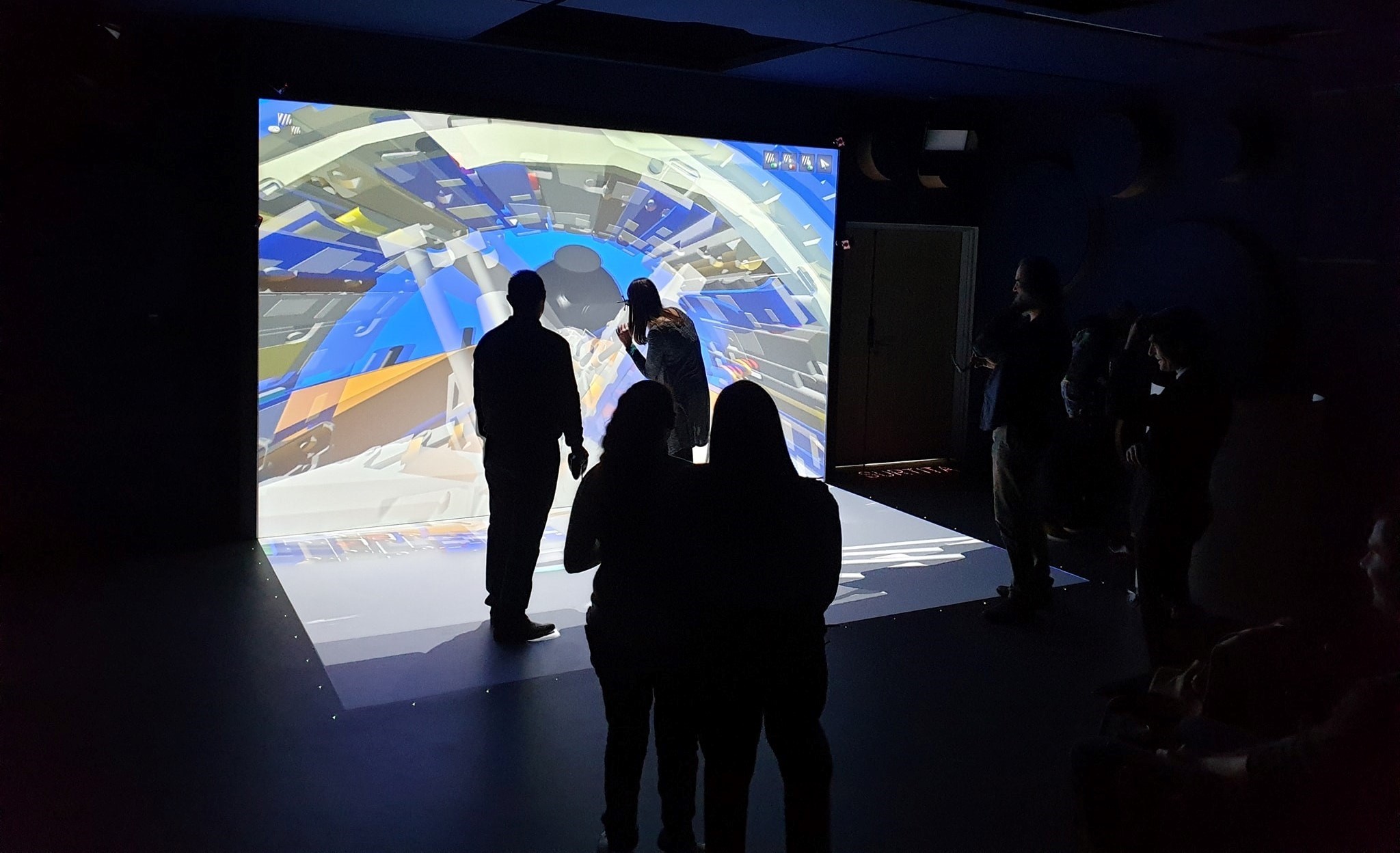
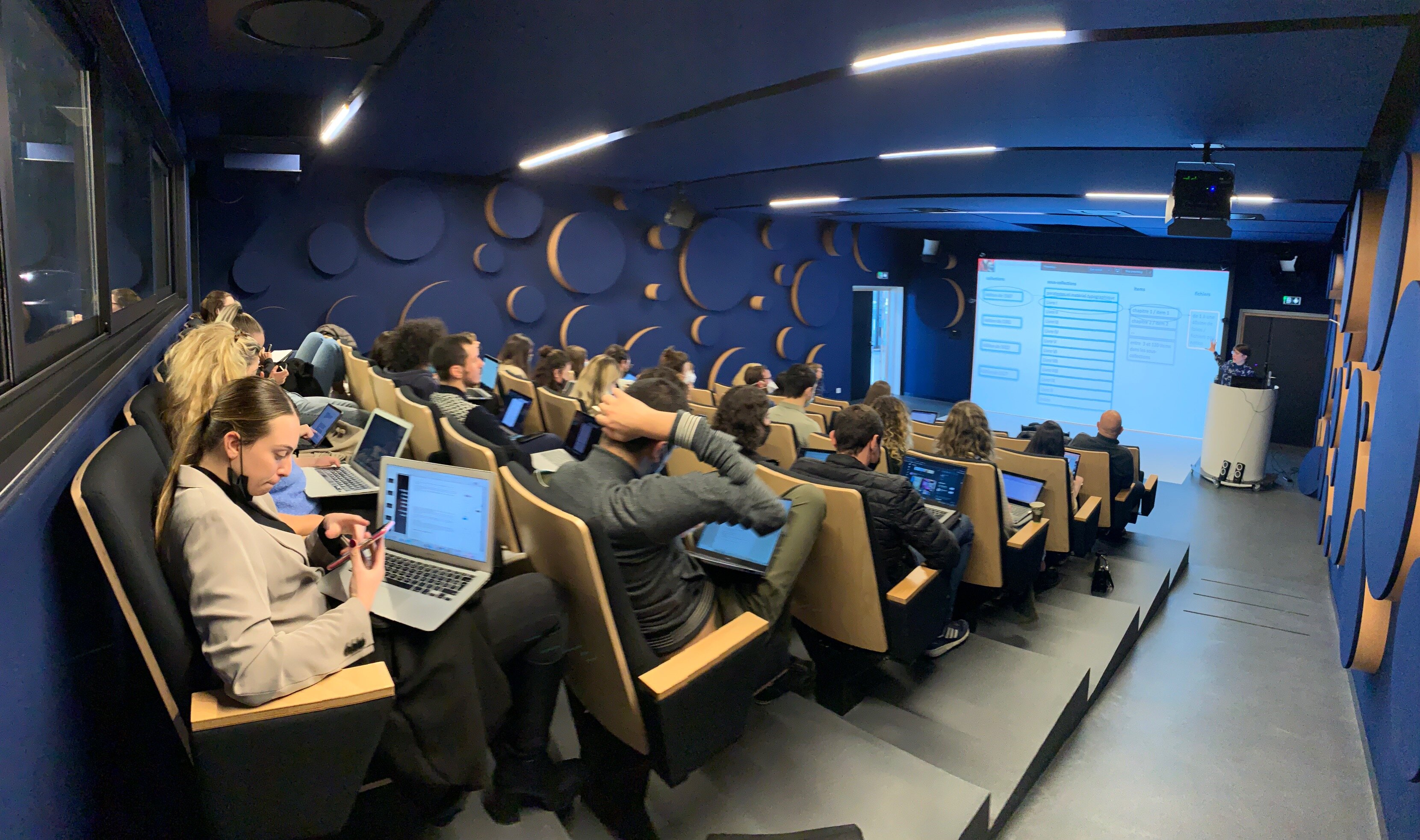
Role and responsibility
The acquisition policy for the collections to be digitized required the creation of a scientific and technical council in order to define a roadmap, a budget, and an activity forecast, which have been renewed annually since 2008.
Scientific Committee (SC)
Mission : define ownership through the M3C's annual scientific objectives.
Membership : director of the laboratory, scientific director of the M3C, leaders of the research theme "Identities, cultures: the processes of patrimonialization", invited external member(s).
Assignments :
- Decides on the coordination of human, technical and financial resources allocated to the M3C program
- Establishes the list of collections to be acquired, their objects of study and their scientific referents
- Establishes the internal steering policy of the M3C at the University of Corsica and with its external partners (laboratories, teams, related projects, etc.)
- Directs the digital processing committee (CTD) in the choice of data collection from individuals or institutions
Digital Data Processing Committee (DPC)
Mission : ensure the project management by the realization of the M3C platform (website, document consultation room, digitization room, immersive room)
Membership : Data analysis engineer, computer engineer, "documentation, publishing, communication" technician, trainees in digitization and publishing of digital corpora, guest member(s).
Assignments :
- Ensures the viability of the data processing chain through the implementation of specifications
- Coordinates resources and methods to produce digital data
- Develops the necessary tools and interfaces based on the needs established by the M3C Scientific Committee.
- Ensures the legal and ethical framework of data acquisition through a legal referent.
Scientific Mediation Committee (SMC)
Mission : To publicize and participate in the influence of the M3C's scientific approach, and to transmit its results to various audiences.
Membership : IE scientific mediation, IE data analysis, Technician "documentation, edition, communication", trainees in digitization and edition of digital corpus, guest member(s).
Assignments :
- Develops the M3C communications plan, ensures dissemination of scientific activities
- Contributes to inserting the finalized projects (website or immersive room) through seminars, a local and CNRS newsletter, restitution days for the general public, in situ and itinerant exhibitions, the life of the M3C platform on social networks, news on the UMR 6240 LISA website, etc.
- Ensures the follow-up of a scientific watch in order to mesh first, then to maintain a device of partners and a professional network.
It should be noted that given the diversity of the missions of the M3C platform and its professional activities (documentation, archiving, administration, financial aspects, legal follow-up, research, research support, event logistics, scientific valorization, etc.), the management of the project must dial with the diversity of its members' missions.
